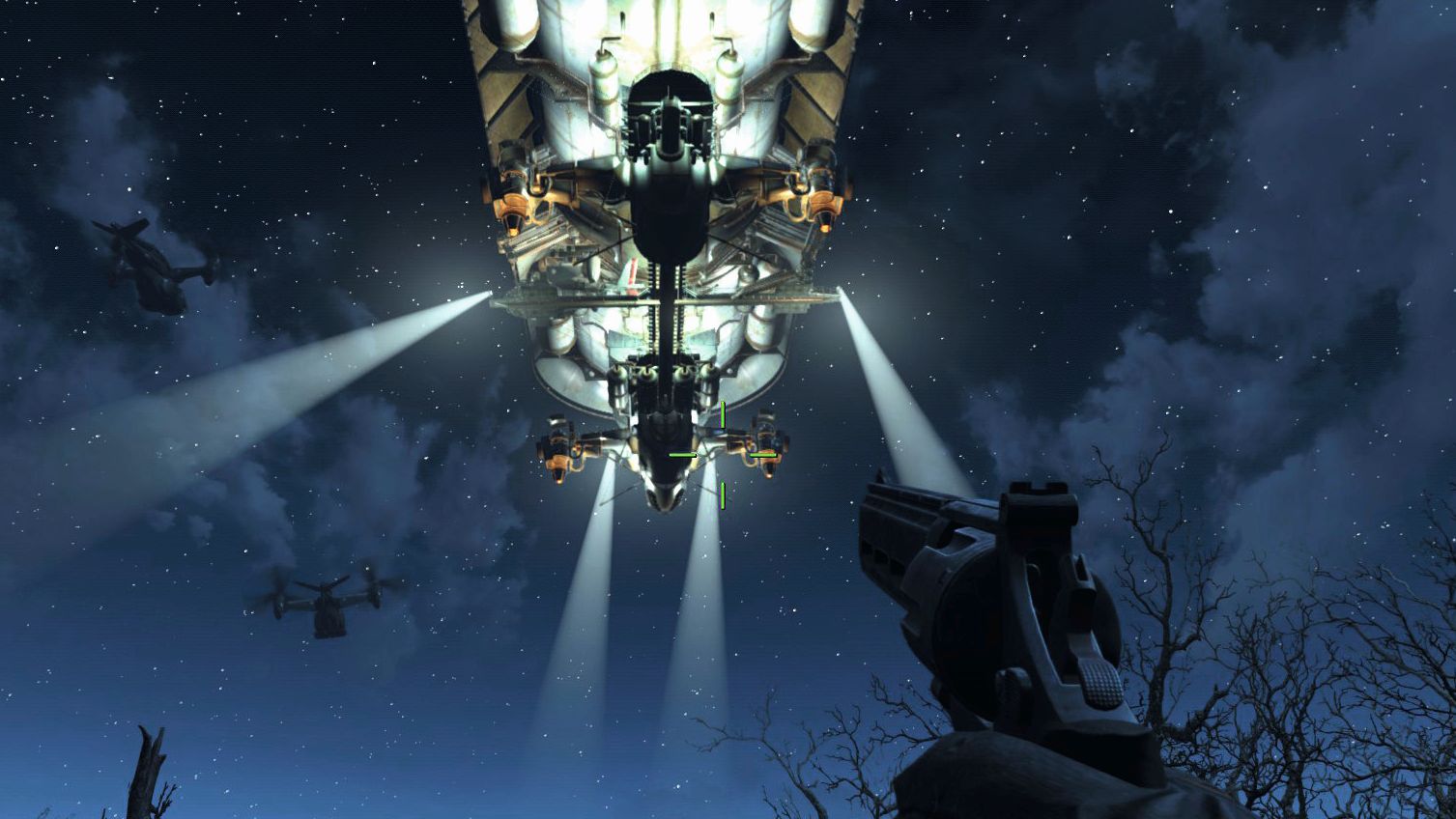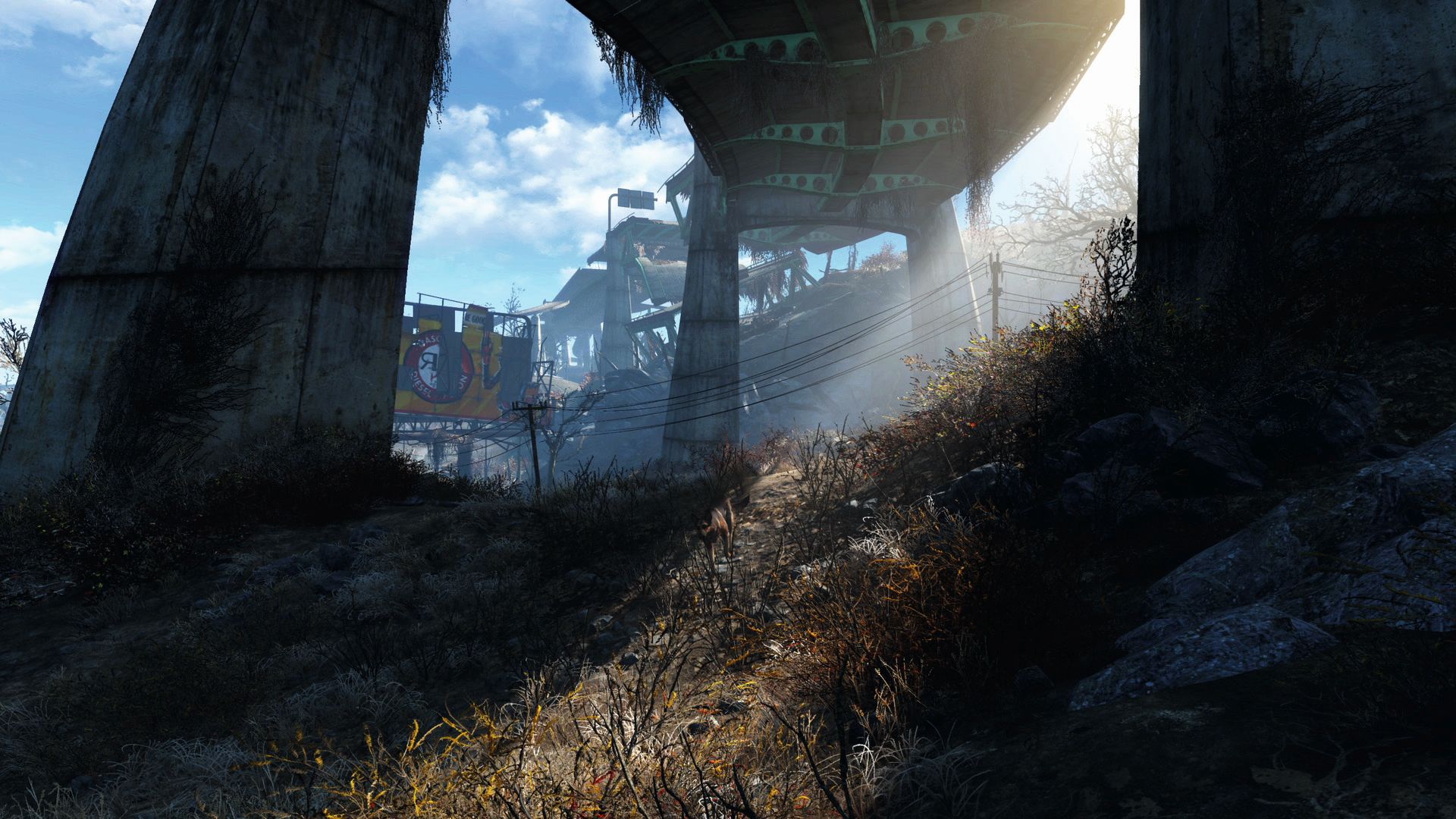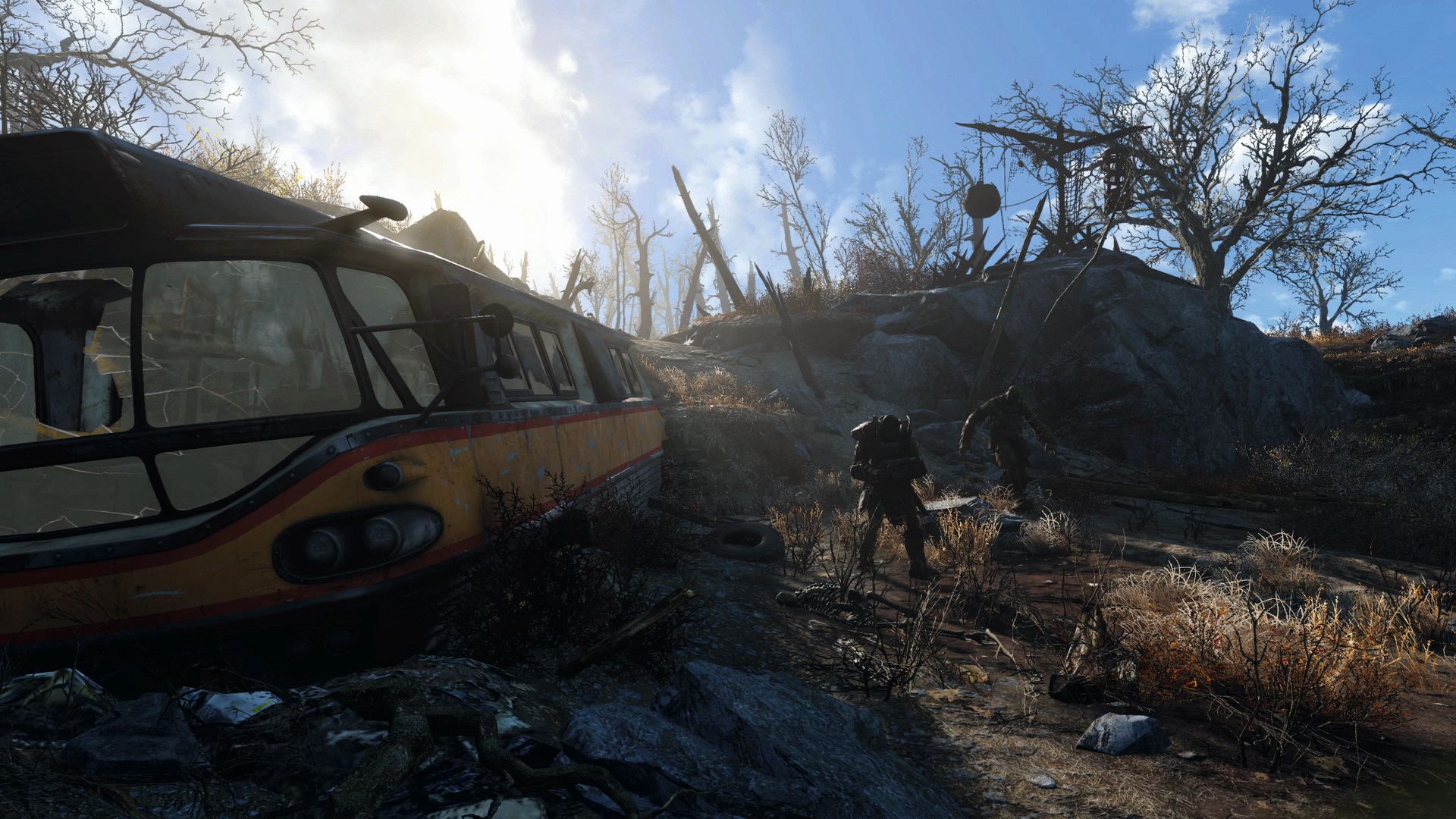Finding hope in the wasteland of Fallout 4


In Why I Love, PC Gamer writers pick an aspect of PC gaming that they love and write about why it's brilliant. Today, Sam takes solace from Fallout 4's apocalypse.
Fallout 3 was about a world on the brink of total collapse. Humanity had splintered into factions, downtown DC’s only civilised people were ghouls and there was a super mutant behemoth stomping around the Capitol Building. Turning the water back on at the end was the one time during the whole game that you could say you made the world a significantly better place.
Set years later, Fallout 4 is a thematically perfect follow-up because it shows us that better times are possible again. The skies are usually blue, and populated settlements grow edible crops. Life isn’t back to normal, and there are plenty of hot zones for raider or super mutant activity, but it’s no longer as chaotic or depressing. The latest Fallout is about rebuilding this world, cultivating communities and protecting what’s yours. And you’re the one doing the building. You create the new settlements; you find the NPCs to populate them. Within 20 hours of starting Fallout 4 I had two completely safe places that belonged to me—not counting my burgeoning settlement of Sanctuary Hills, my character’s old home.
Fallout 3 was determined never to give me a place to call home. I had one fancy apartment that I had to wipe out an entire town with a nuke to get. Going back to the start isn’t an option, either. Once you leave Vault 101, you can’t return for a long time. When you do, you either have to kill everyone or kill the overseer, prompting your childhood friend, Amata, to ask you to leave forever. There’s no way to win. You’re kicked out, and whatever you’ve made of yourself in the Wasteland is all you have left, which in my case was a fancy apartment, a dog and no surviving friends.

In Fallout 4 your character still faces a grim start: he or she is searching for their kidnapped son, their partner having been shot dead. But from there, you’re surrounded by mostly supportive and exciting allies. They can’t be killed, either: permadeath has been taken out. Fawkes died in my Fallout 3 game moments after telling me he couldn’t possibly ally himself with someone horrible enough to blow up a town with a nuke just for a neat apartment. Fallout 4 isn’t as concerned with presenting a miserable world full of loss and experiences you can’t recover from—no matter how bad things get, we can rebuild, we can find purpose again. This is echoed in companions like Piper and Nick Valentine, who want to resolve certain experiences in their past and move on, as well as Preston Garvey, who seeks to revive the long-dormant Minutemen movement and protect the city of Boston. Everyone’s got something they want to move on from, but no one’s given up.
Several of the sidequests tap into similar themes. The Silver Shroud casts the player as a Batmanesque vigilante from the pre-war era, righting wrongs in Goodneighbor and course-correcting that town’s shaky morality. The entertainingly small scale Confidence Man is about self-improvement, in that you’re helping transform Diamond City’s nervous DJ into the smoothest bastard on post-apocalypse radio, by helping him fight a bunch of dicks who think they can behave like it’s a world without rules. You don’t have to play a nice guy, but the opportunity to positively affect the Commonwealth is more tempting to me than it was in Fallout 3. The world not being completely beyond saving suggests that there’s a potentially happy future here.
Moment-to-moment, I don’t feel nearly as tense moving through this world in Fallout 4; a little more of the wonder I got from exploring Skyrim seeps in instead. There are parts of the map that aren’t cheerful—particularly the Glowing Sea, which is more in Fallout 3’s colour palette since it’s where the nukes hit. And the final act of the main story becomes far more about waging war than fixing the Commonwealth, which is where the story began.
As one of the Brotherhood of Steel put it to me, however, if you think the Commonwealth is bad, you should see the Capital Wasteland. Fallout 3 came first, so it had to be the game that showed us just how bad things could get after the nukes fell. You couldn’t hold up Fallout 4’s Commonwealth as a contrast without it. There are still plenty of super mutants and raiders occupying what used to be Boston, but it’s not the end of the world.
Keep up to date with the most important stories and the best deals, as picked by the PC Gamer team.


